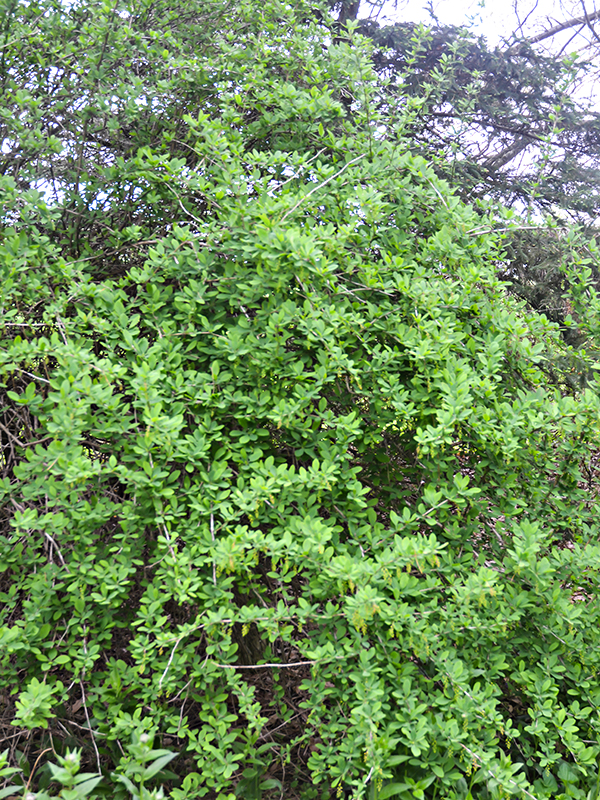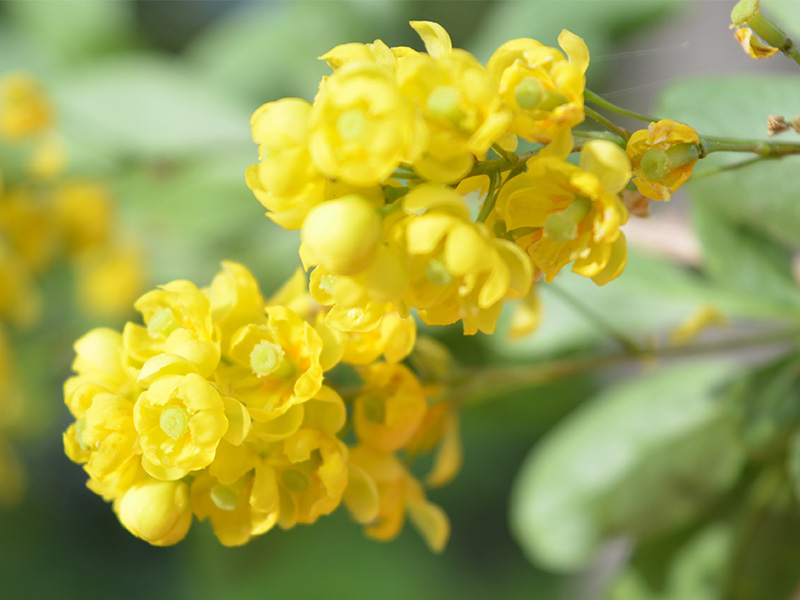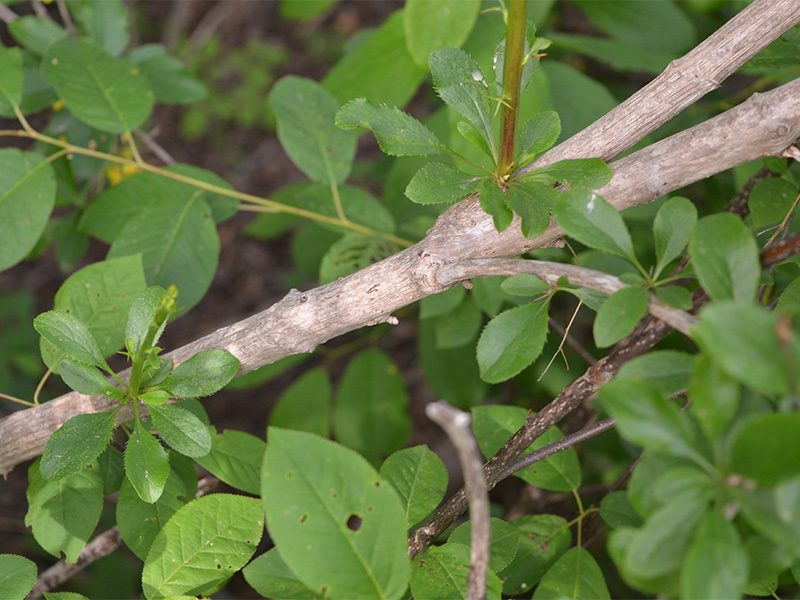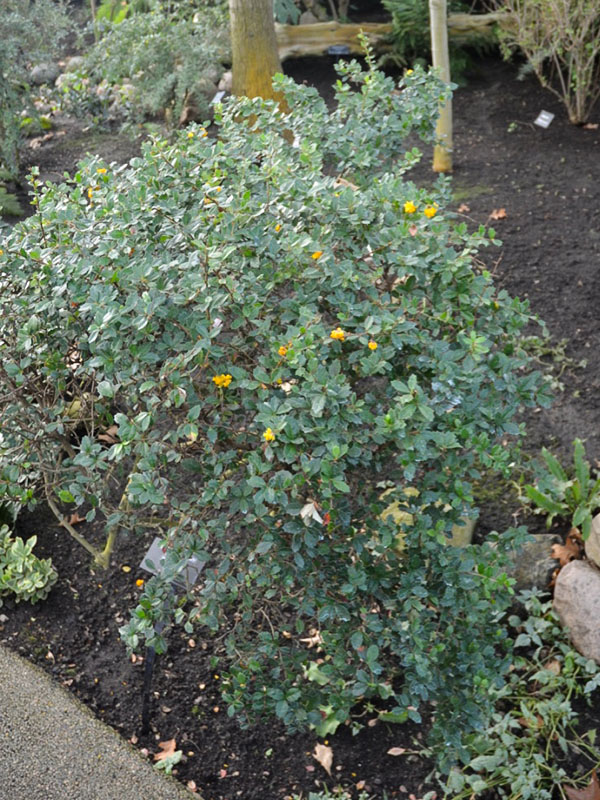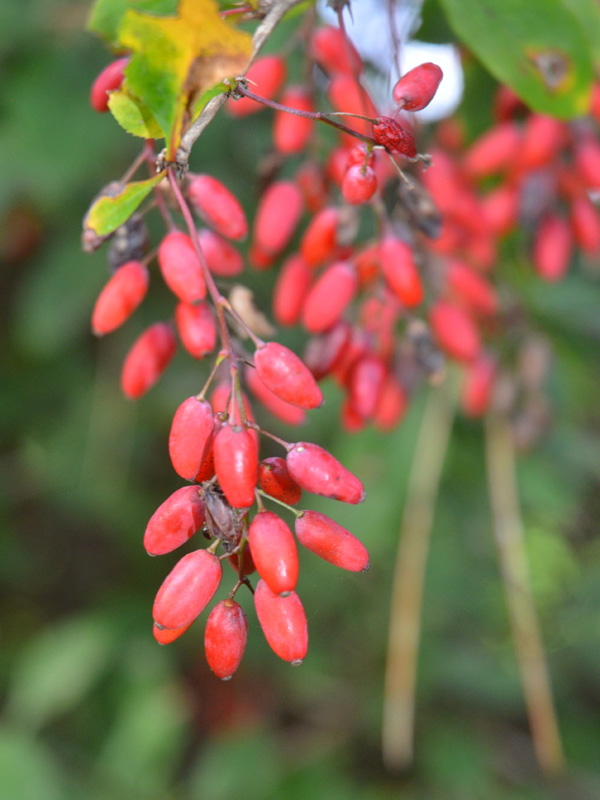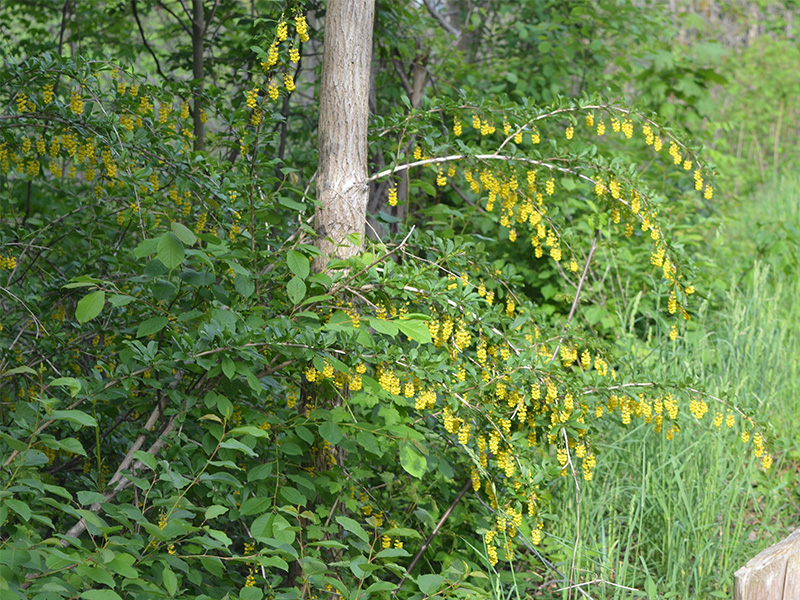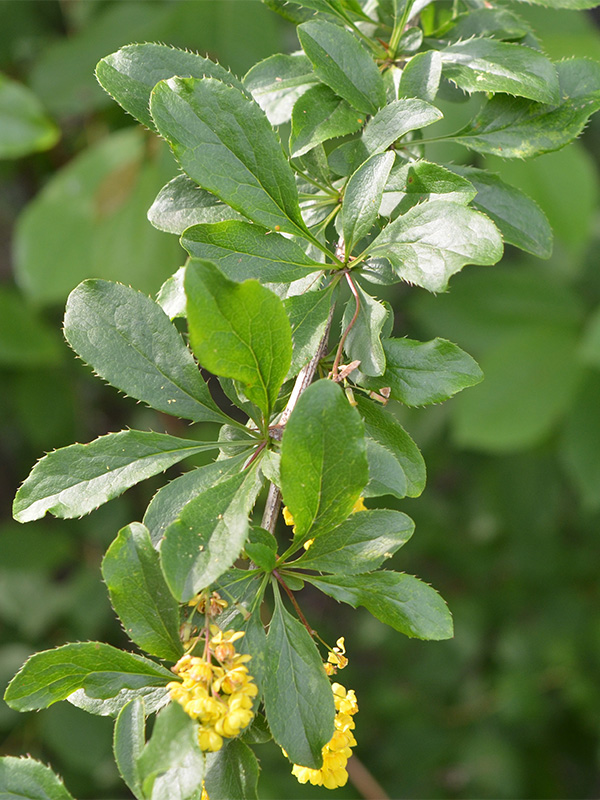| Shape | Broad. |
| Propagation | Seed and hardwood cuttings. |
| Cultivation | Grow in full sun and in well-drained soil of any acidity. |
| Pests | Pseudomonas berberidis (a bacterium) may cause small, purplish-black leaf spots, which may coalesce to cause yellowing and early leaf fall. |
| Bark/Stem Description | The stems are grooved, cambium is a distinct yellow colour. |
| Leaf Description | Small, oval, 2 - 5 cm long and 1 - 2 cm wide with serrated margin. Borne in clusters of 2 - 5. |
| Flower Description | The flowers are 4 - 6 mm wide and are produced on 3 - 6 cm long panicles in late spring. |
| Fruit Description | The fruit is oblong, 7 - 10 mm long and 3 - 5 mm wide, berry-like and ripen in late summer or autumn. |
| Colour Description | The leaves are green. The flowers and stems are yellow. The berries are red. |
